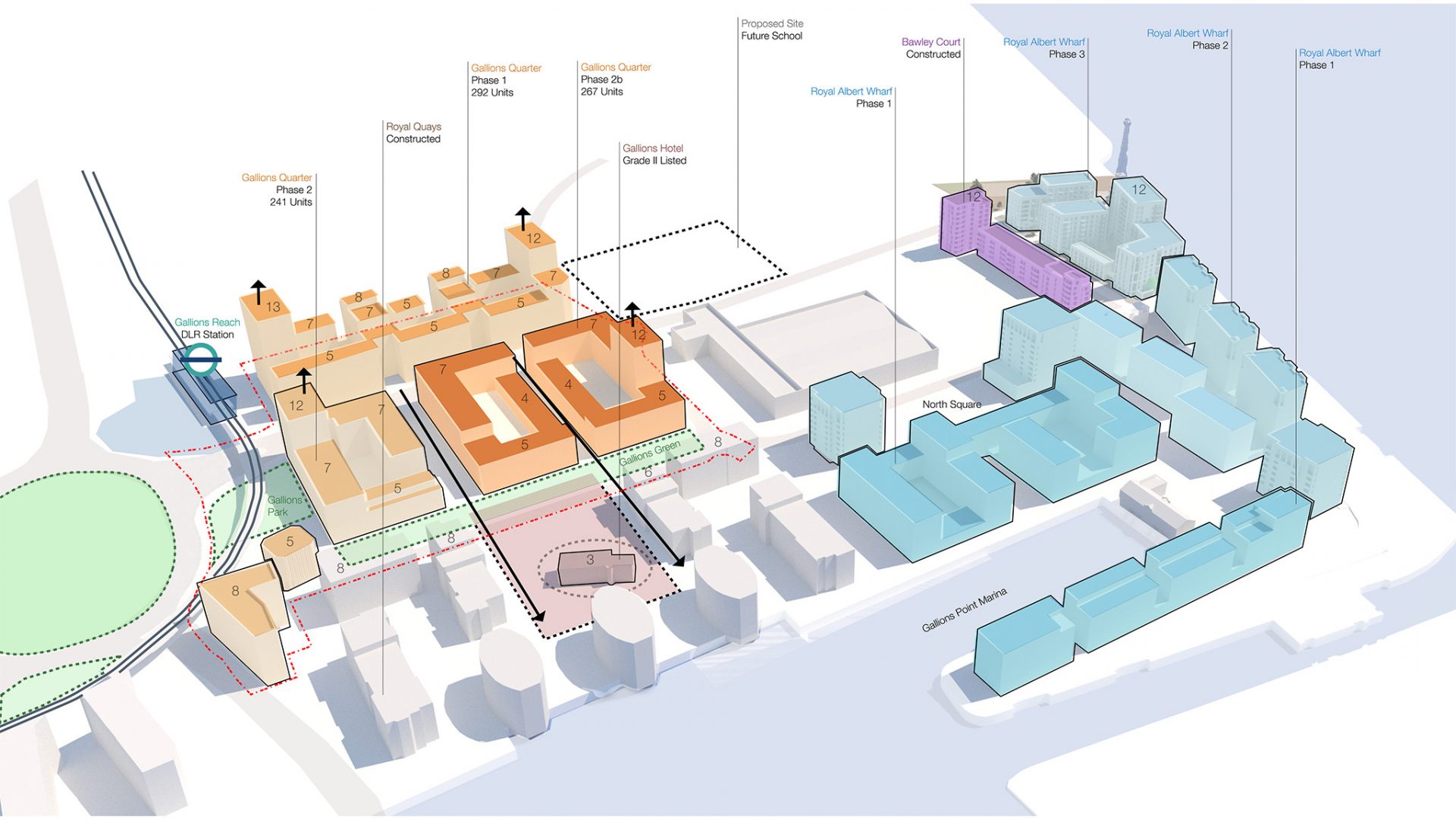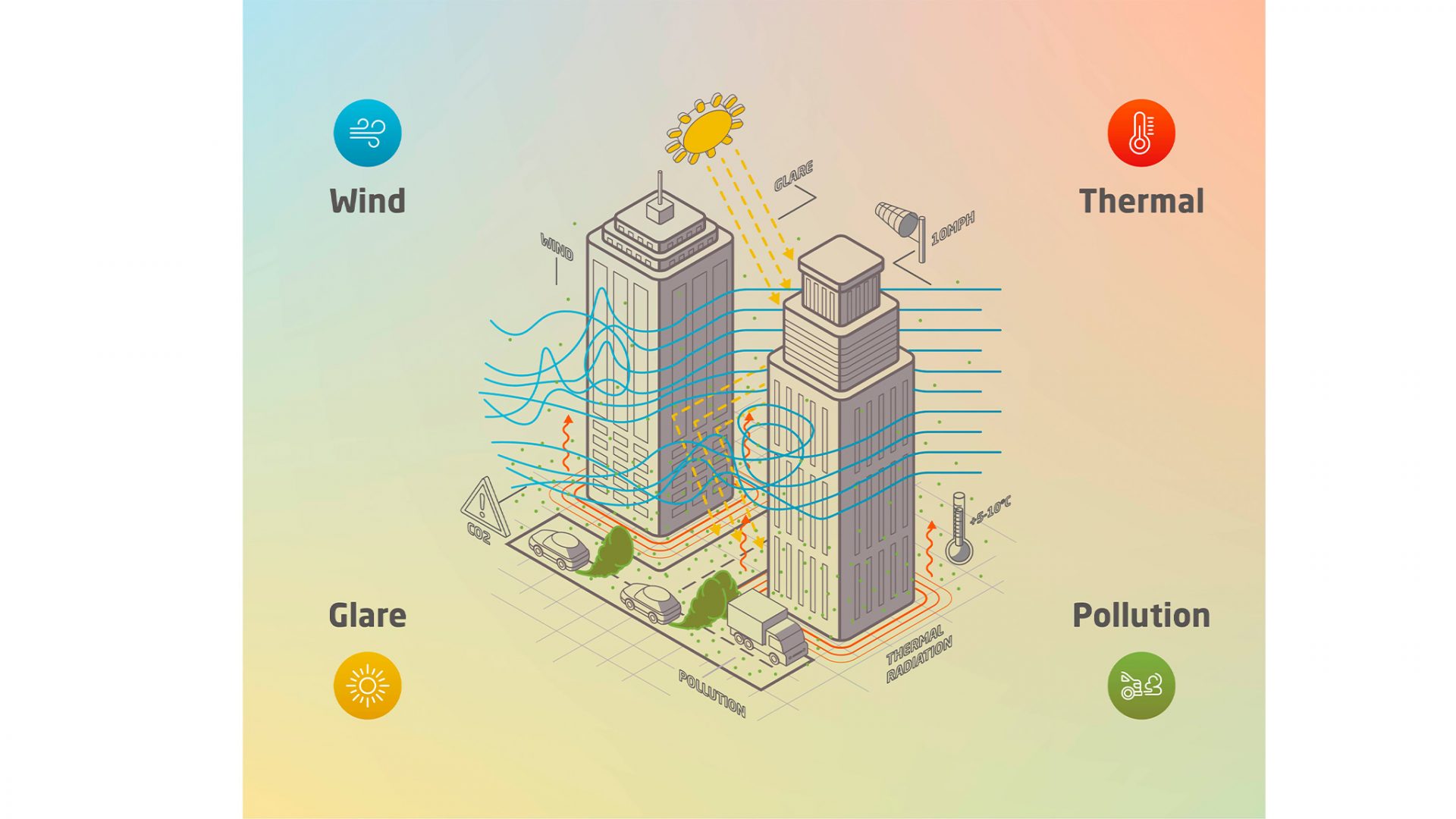Andy Macintosh is an Associate at Feilden Clegg Bradley Studio. In this article Andy reflects on our theme of 'care', by looking at high density, low rise and zero carbon in masterplans.
There are many well-used references for advocating low rise density over height in a masterplan: that housing densities in low-rise Notting Hill are higher than many tower blocks; or that Barcelona and Paris are denser than New York. Many will remember the diagrams of different ways of achieving density from the GLA’s “Housing for a Compact City” from a couple of decades ago. Compact low-rise makes for a more humane environment, but how do these decisions impact the future carbon footprint of the buildings within the masterplan?
At FCBStudios we have measured carbon in our buildings for some time. Using our FCBS Carbon Calculator, now all early stage projects undergo a whole life carbon and energy assessment. As an early indication it allows us to make informed judgements about operational and embodied carbon at early stages. For masterplan projects, that process is less clear because decisions about structural materials or heating systems are not necessarily within our scope.
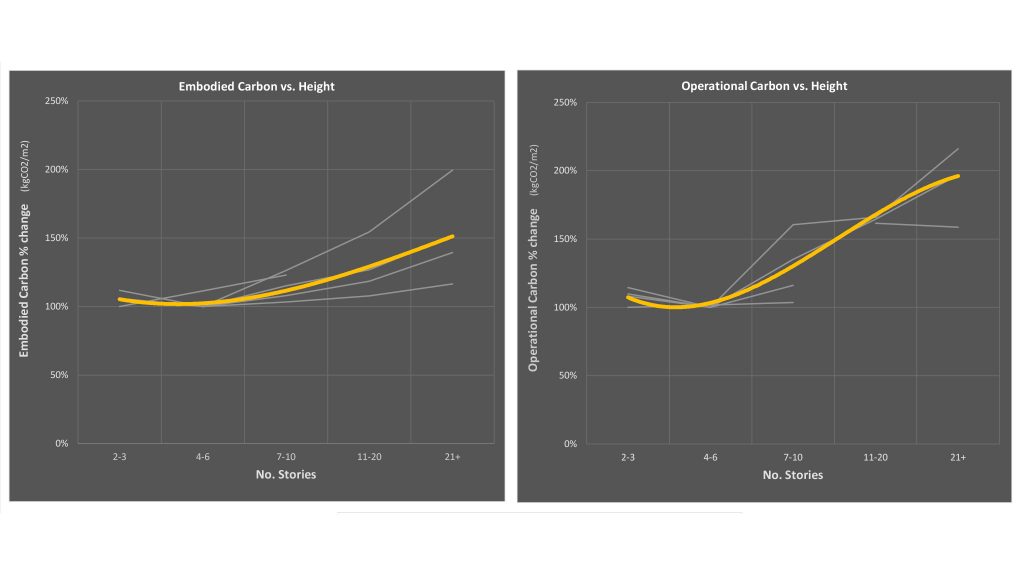
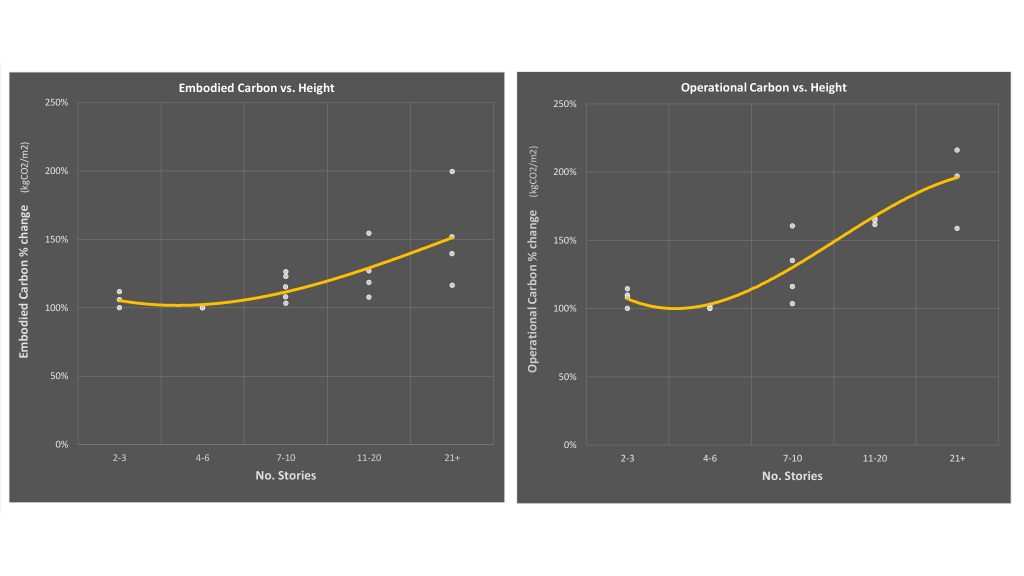
Above Images: Carbon vs Height Graphs
However, the potential climate impacts of decisions are still huge, so we have been examining the research basis for some of those intuitions about urban design:
Operational Carbon
Services aside, future operational energy will be helped by a good form factor, by sensible floor plate depths, and by orientation. LETI’s Climate Emergency Design Guide is an excellent reference. More surprisingly, the height of buildings seems to have a big impact on operational energy consumption. Research by UCL Energy Institute on 600 existing buildings across London showed a strong correlation between increasing height and increasing energy consumption. Low-rise buildings are not necessarily comparable as they offer different building typologies, but a less efficient form-factor would typically lead to higher consumption per sqm. Two pieces of UCL research plus other studies of energy and height are compared in the graph shown here, with the trend line shown in yellow.
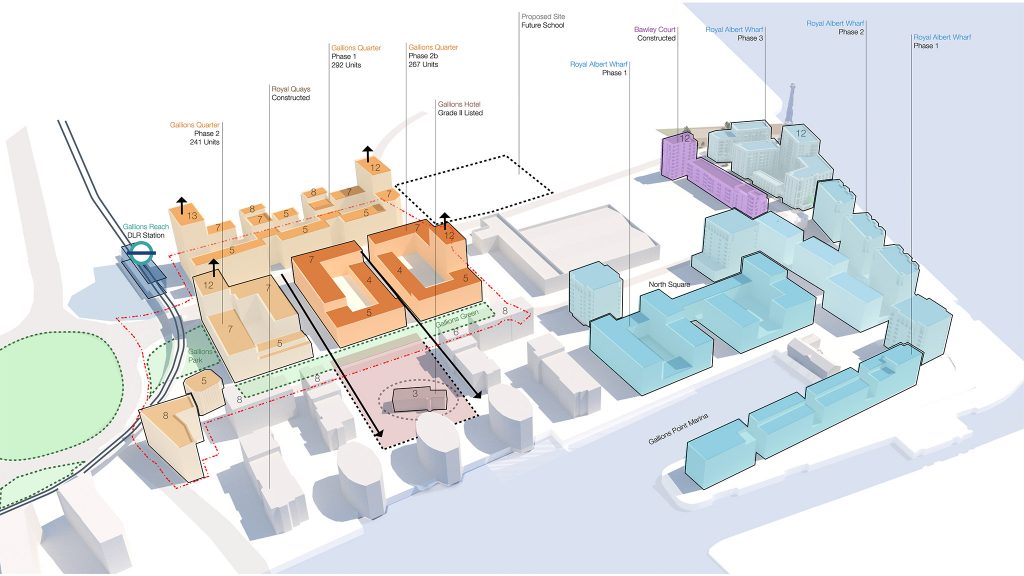
Above Image: FCBStudios proposals for Gallions and Great Eastern Quays
Embodied Carbon
We shouldn’t underestimate the impact of the masterplan design on embodied carbon, even though no materials are decided. Decisions about the height of taller buildings within a masterplan will have a major influence on the embodied carbon.
Embodied carbon per sqm increases with height because of the increasing stresses on the building structure. There are also increases in lifts and risers, which add to structural shear walls. The structural ‘square-cube law’ is included in simplified form in Thomson Architecture’s carbon calculator, and other academic studies on structures show similar patterns with varying steepness. The trend from all these studies shows an embodied carbon ‘sweet spot’ at roughly 5-6 stories.
In addition to these increases, the choice of height also limits options for the building structure. The 18m rule prohibits structural timber for taller residential buildings, and in commercial buildings structural timber gets harder to insure as height increases.
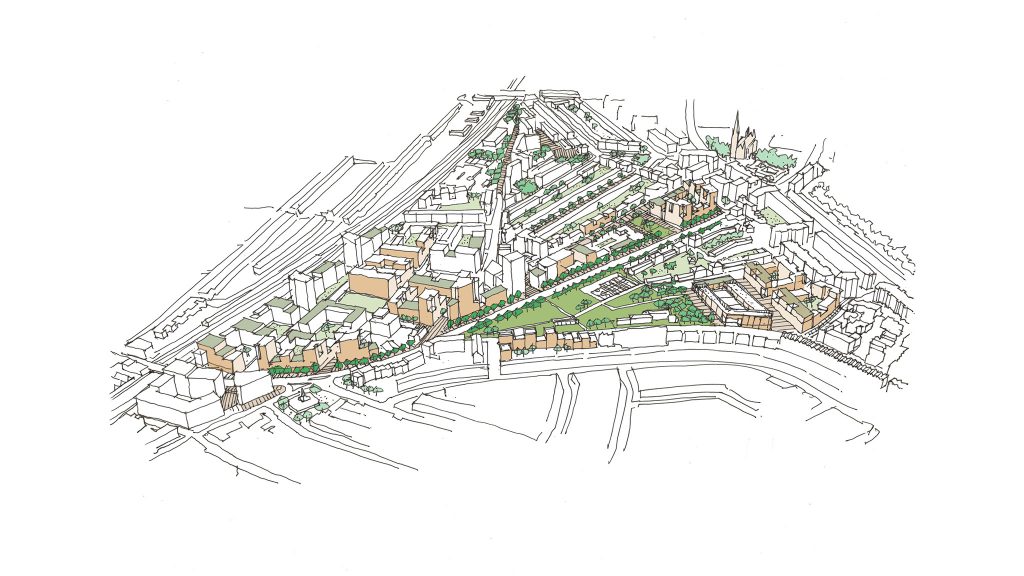
Above Image: FCBStudios masterplan for South Kilburn
Density
The graphs here suggest an ‘optimum’ at around 4-6 stories, although we frequently build taller in city centres, and often with good reason. Transport makes up about one third of an average person’s carbon footprint, and for less urban sites it can dwarf the operational and embodied carbon. Building more densely where there are good transport connections and low car usage clearly makes environmental sense and has long been the norm for planning policy.
However, that brings us back to the point that density and height are not the same thing. The research summarised here should reinforce our view that whilst high-density will often be a key aspiration for any urban masterplan, our starting point should ideally be to deliver that density in as low rise a scheme as possible. In that way, we improve our chances of achieving net zero carbon within the buildings, when then are delivered.




